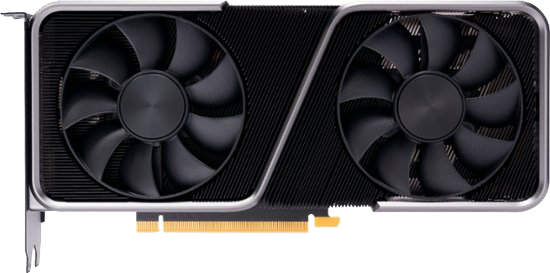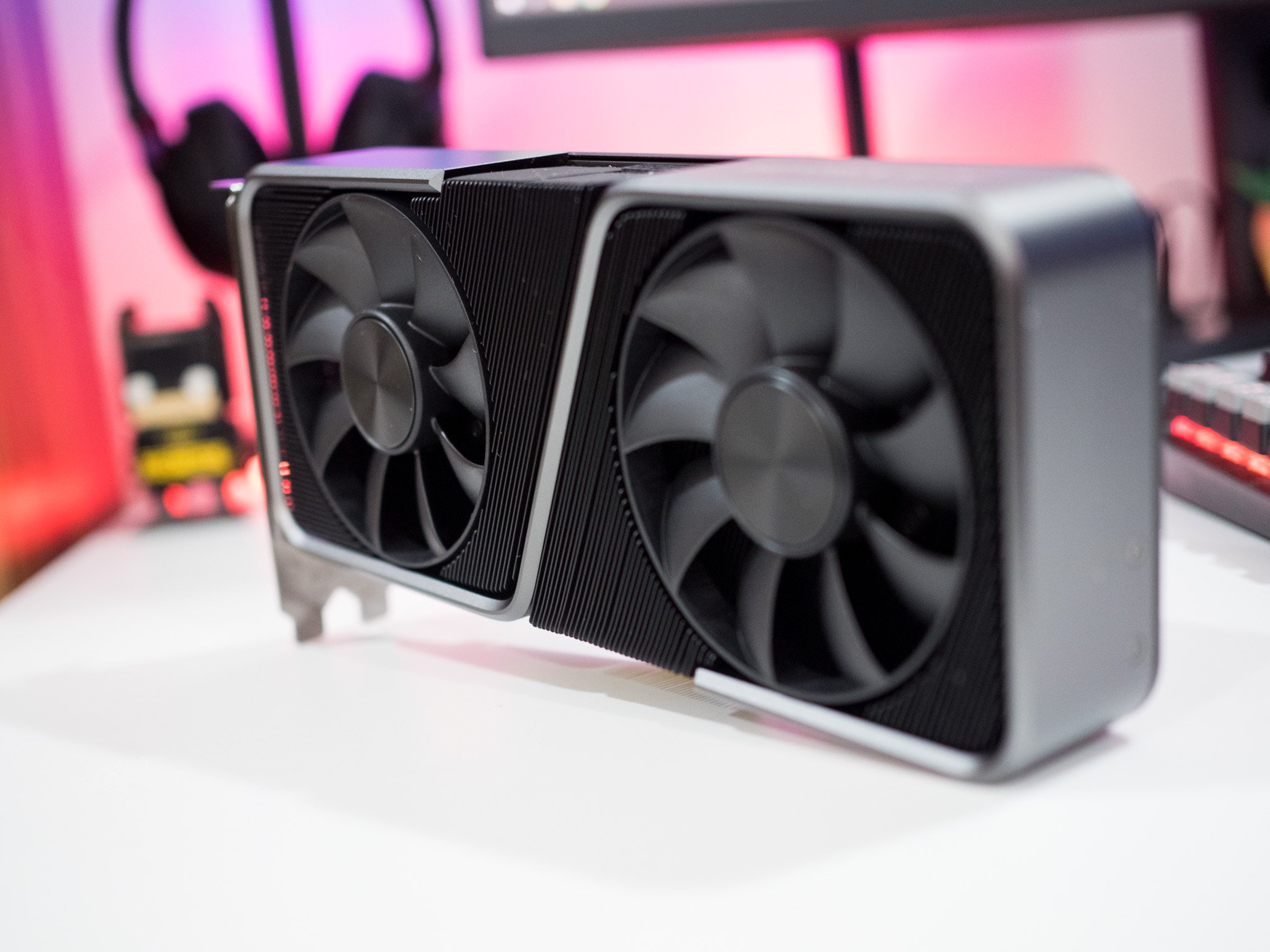Great ray-tracing middle ground
NVIDIA GeForce RTX 3070
Pros
- Solid ray tracing performance
- Better frame rates across the board
- Does great at 1440p and 4K
- HDMI 2.1
Cons
- Higher power consumption than the GTX 1080
- Limited stocks for now
The NVIDIA GeForce RTX 3070 is the new budget GPU king, offering stellar performance while keeping a relatively lower price for a ray tracing-capable card. It's quite a step-up from the GTX 1080, offering notably better performance at 1440p and 4K, with good ray tracing performance. It's priced well, too, but unfortunately short in supply right now.
The former flasghip GPU
NVIDIA GeForce GTX 1080
Pros
- Hold up well for 1080p gaming
- Can do some 1440p and 4K gaming
- Lower power consumption
Cons
- No ray tracing
- Struggles to hit higher frame rates, especially at 1440p and 4K
The NVIDIA GeForce GTX 1080 is the last GTX flagship GPU from NVIDIA. While it was a great performer for its time, it was also one of the last NVIDIA flagship GPUs without ray tracing capabilities. It holds up well for 1080p, but for higher resolutions and next-gen gaming, it isn't quite the GPU to have right now.
The NVIDIA GeForce RTX 3070 is the new budget entry point for NVIDIA GPUs, striking a great balance between price and performance. It started at a lower price than the GTX 1080 did, while offering better performance across the board. With a much better gaming experience at higher resolutions, coupled with ray tracing, an upgrade to the RTX 3070 from a GTX 1080 is a no-brainer.
NVIDIA GeForce RTX 3070 vs. GTX 1080 specs
NVIDIA GeForce RTX 3070 is a serious hardware upgrade from the GTX 1080. The new Ampere GPU under the hood, the GA102, is made with the 8nm process from Samsung. The GTX 1080, on the other hand, has the GP104 chip, which was made with the 16nm TSMC process. This jump actually means a lot in terms of raw power, since the RTX 3070 has 17.4 billion transistors, as opposed to the 7.2 billion transistors on the GTX 1080. Here are the rest of the specifications of the two cards.
| Category | NVIDIA GeForce RTX 3070 | NVIDIA GeForce GTX 1080 |
|---|---|---|
| Shader (CUDA) Cores | 5888 | 2560 |
| Core Clock | 1500MHz | 1607MHz |
| Boost Clock | 1725MHz | 1733MHz |
| Memory | 8GB GDDR6X 256-bit bus width |
8 GB GDDR5X 256-bit bus width |
| Memory Clock | 14Gbps | 10Gbps |
| Memory Bandwidth | 448GB/s | 320GB/s |
| RT Cores | 46 | 0 |
| Tensor Cores | 184 | 0 |
| Transistors | 17.4 billion | 7.2 billion |
| Node | Samsung 8nm | TSMC 16nm |
| Architecture | Ampere | Pascal |
| TDP | 220W | 180 W |
| Ports | 1 x HDMI 2.1 3 x DisplayPort 1.4a |
1 x HDMI 2.0b 3 x DisplayPort 1.4 1 x DL-DVI |
| Power Connector | 1 x 12-pin 1 x PCIe 8-pin converter included |
1 x 8 pin |
The RTX 3070 includes RT and Tensor cores, which are exclusive to the RTX lineup. This, in addition to the transistor count, means that the RTX 3070 is a lot more powerful than the GTX 1080, which shows in real-world performance as well.
NVIDIA GeForce RTX 3070 vs. GTX 1080 real-world performance
In our NVIDIA GeForce RTX 3070 review, we compared it to the RTX 2080, which it clearly outperformed. It has an even clearer performance jump when compared to the GTX 1080, with huge frame-rate gains in 1440p and 4K performance. The NVIDIA GeForce RTX 3070 is a clear choice for an upgrade hence, especially if the goal is better frame-rates, and a next-gen gaming experience. Here are some real-world gameplay FPS comparisons, courtesy of PC Benchmarks.
| Game | RTX 3070 (avg. FPS, 1440p) | GTX 1080 (avg. FPS, 1440p) | RTX 3070 (avg. FPS, 4K) | GTX 1080 (avg. FPS, 4K) |
|---|---|---|---|---|
| GTA V | 158 | 125 | 97 | 64 |
| Gears 5 | 92 | 63 | 60 | 37 |
| DOOM Eternal | 249 | 122 | 125 | 70 |
| Red Dead Redemption 2 | 92 | 49 | 60 | 32 |
| Far Cry New Dawn | 134 | 93 | 81 | 51 |
| Assassin's Creed: Odessey | 69 | 48 | 52 | 30 |
| Shadow of the Tomb Raider | 121 | 68 | 66 | 37 |
The GTX 1080 is the performance king of the yesteryear, and it still does quite well at 1080p, and shows acceptable performance at 1440p. However, the RTX 3070 has it beat in all aspects, plus it brings in ray tracing. Not to forget that it features a host of other next-gen gaming features that the GTX 1080 is simply incapable of.
With 1440p, the GTX 1080 struggles to reach the 60 FPS mark with some more intensive titles, while the RTX 3070 does so with ease. The RTX 3070 can even hit the 144 FPS figure with some adjustments, while the GTX 1080 requires the graphics settings to be tuned down quite a bit in order to do so.
While the RTX 3070 is a solid 1440p performer, it doesn't stop there. It also performs quite well at 4K. The GTX 1080, however, clearly struggles to achieve what we would call smooth gameplay at 4K. An upgrade to RTX 3070 means you'll have a much better 1440p and 4K gaming experience, and improved visuals thanks to ray tracing.
So should you upgrade to the NVIDIA GeForce RTX 3070 from GTX 1080?
Yes, you should. While the GTX 1080 is a great card, it is not built to handle higher resolutions, and shows its age with newer titles. The RTX 3070 is a great upgrade option, with noticable performance gains. In the span of two generations, NVIDIA's GPU lineup has packed in a lot of power, and it shows in real world performance.
The one big issue with the RTX 3070 however, is its availability. New GPUs are very hard to find thanks to the short supply and heavy demand, and this means that many RTX 3070 cards are being sold at exorbitant prices that are marked up way above the actual retail price.
While the jump from a GTX 1080 to an RTX 3070 is recommended, it is not worth shelling out extra cash over the retail price, especially since the attractive intended price tag is a huge reason for this upgrade being a lucrative one. Buying a RTX 3070 at an acceptable price will require some waiting and planning on your part.
An upgrade to the NVIDIA GeForce RTX 3070 may also require some other upgrades to your system. The card consumes 40W more power than the GTX 1080. This means that if your current power supply unit (PSU) was already at its limit, you might want to consider an upgrade to it. You may also not be able tot get the best of your RTX 3070 if the rest of the system, especially the CPU, isn't powerful enough to run alongside it.
If you have a good enough system, however, and can play the waiting game, then the RTX 3070 should serve as just about the perfect upgrade from your GTX 1080.
RTX 30 galore
NVIDIA GeForce RTX 3070
Trace those rays
The NVIDIA GeForce RTX 3070 is a great entry point into the world of next-gen gaming. A solid upgrade from the GTX 1080, it does better at 1440p and 4K, and brings in a host of next-gen gaming enhancements. Although it's available in very limited quantities, if you can get your hands on it, it makes for a solid upgrade.
Former champion
NVIDIA GeForce GTX 1080
Good for 1080p but not much else
The NVIDIA GeForce GTX 1080 is a former flagship GPU which still does 1080p well. However, it's very last-gen, and can't quite come close to the RTX 3070 at higher resolutions. The GTX 1080 also completely lacks ray tracing capabilities. While it should be enough until you can buy an RTX 3070 at an acceptable price, the GTX 1080 is starting to show its age.




No comments: